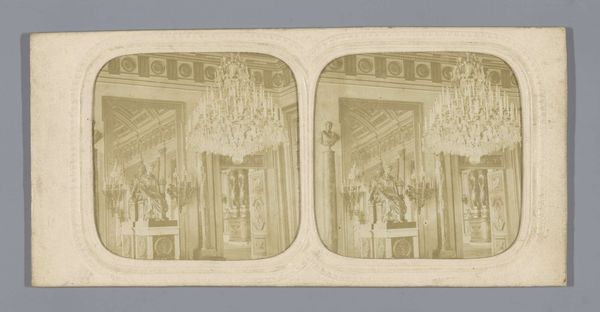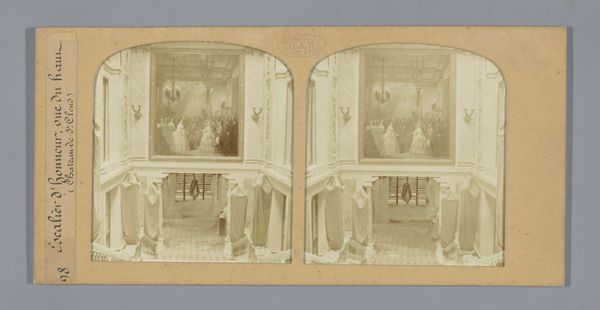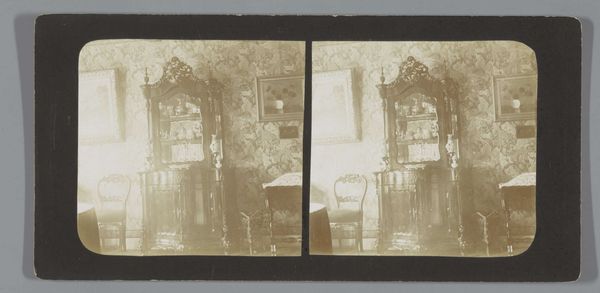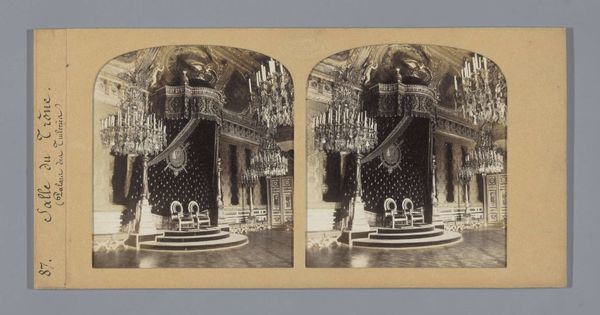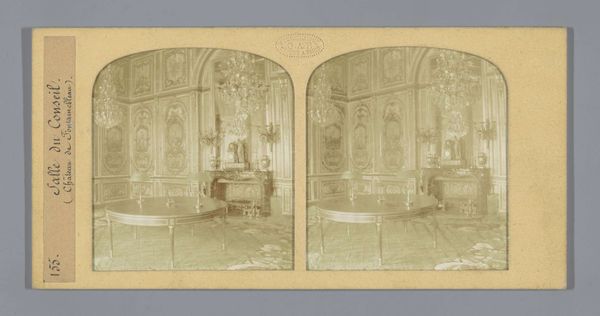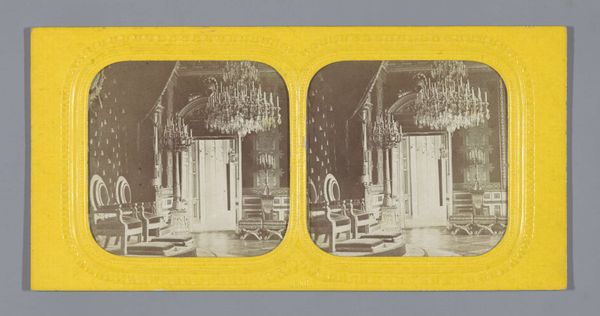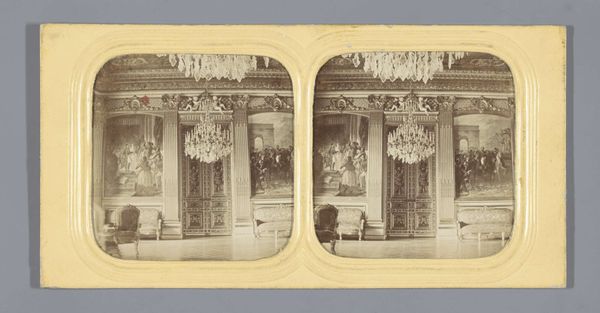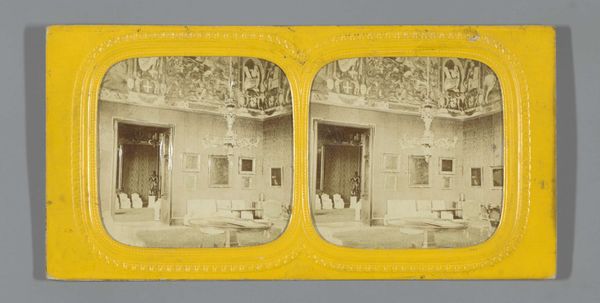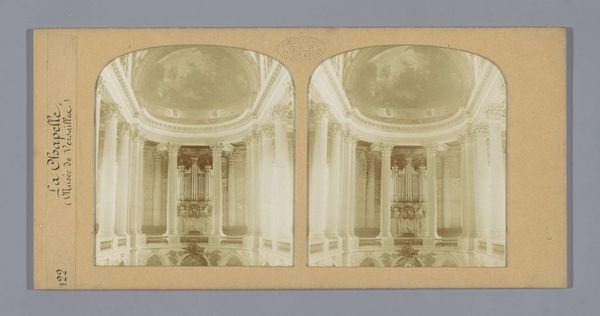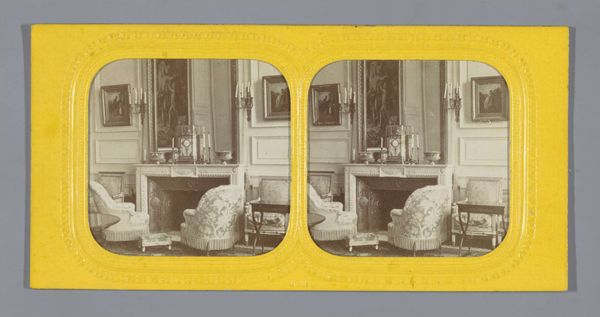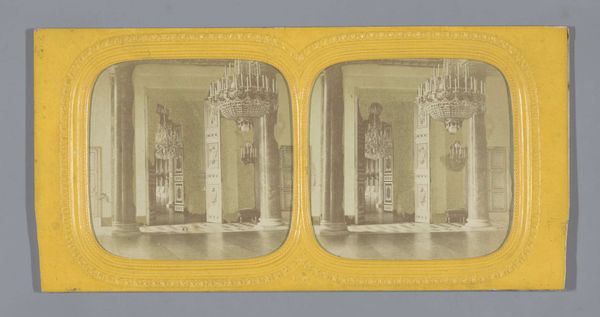
print, photography
# print
#
landscape
#
photography
Dimensions: height 82 mm, width 168 mm
Copyright: Rijks Museum: Open Domain
Curator: Welcome to the Grand Trianon, where we find ourselves gazing at an 1859 print entitled "Bed van de Engelse koningin in het Groot Trianon, Versailles," attributed to Florent Grau. It presents a stereoscopic view of a lavish royal bedroom. My initial feeling is of quiet opulence, a somewhat frozen moment in time. What impressions does it spark for you? Editor: The composition really strikes me. I see this massive, ornamented bed as a throne of slumber, emphasizing status and ceremony even in the act of rest. The chandelier looming above reinforces the dream space as another site of power and display. Curator: Indeed, sleep, or at least its symbolic representation, becomes another arena for demonstrating authority. This particular bed, as the title suggests, connects to the narrative of an English queen within a French palace. Considering the history, it probably points towards Queen Victoria’s visit to France in 1855 during a period of Entente Cordiale between England and France. Editor: So, the bed represents a complex symbol—comfort intertwined with diplomatic relationships. Visually, the repeated patterns – the curtains, wall panels, even the chandelier – create a layered effect, maybe speaking to the multiple meanings of queenship? Each decorative layer adds to the symbolic weight. Curator: Precisely! We need to think of the performative aspects of monarchy, the necessity of stage-managing its image. The print format itself serves that end, mass-producing a vision of royal life to be consumed by the broader public. Stereoscopic prints were very popular at the time, it brought viewers closer to this royal "reality." Editor: I hadn't considered that accessibility. So, while the subject matter screams exclusivity, the medium introduces a democratizing element. It reminds me of the constant push and pull between the spectacle of power and the need to disseminate it to maintain authority. Curator: Exactly. Even in our time, these images provide invaluable insights into the staged displays of royal power and how this resonated with the public through printed media. It’s not just a landscape; it’s an historical document. Editor: It really pushes us to consider how symbols are embedded not just within images, but within the means by which images circulate. I walk away with a better sense of how potent, and yet controlled, such depictions could be. Curator: A potent snapshot indeed, encapsulating both the splendor and the politics of representation in 19th-century Europe.
Comments
No comments
Be the first to comment and join the conversation on the ultimate creative platform.
